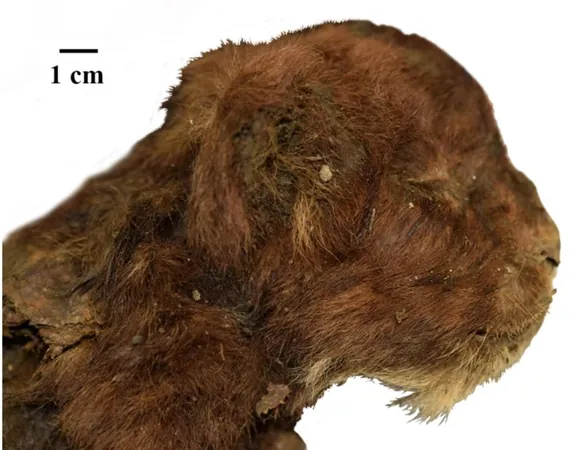
Shocking Discovery: 35,000-Year-Old Mummy of Saber-Toothed Kitten Unearthed in Siberia!
2024-11-20
Author: Liam
In a stunning archaeological find, explorers hunting for mammoth tusks in Siberia stumbled upon the remarkably preserved mummy of a 35,000-year-old saber-toothed kitten! Discovered near the Badyarikha River, this groundbreaking find is the first of its kind and promises to reshape our understanding of these fascinating prehistoric creatures.
The kitten was found in the frigid depths of Siberian permafrost, a layer of soil that remains frozen throughout the year. As global temperatures rise due to climate change, more and more of these icy landscapes are melting, unveiling ancient secrets that have been trapped for millennia. This particular discovery is shedding light on the life and characteristics of saber-toothed cats, which roamed the Earth thousands of years ago.
Saber-toothed cats, of the genus Homotherium, were renowned for their impressive long, curved teeth and muscular build. Despite their resemblance to modern big cats like tigers, they were not closely related and went extinct at the end of the last Ice Age. Scientists had previously examined the bones of saber-toothed cats, including juveniles, but this is the first time an intact mummy has been found—an extraordinary opportunity to study its soft tissues, fur, and even fine anatomical details such as ear size!
The kitten, estimated to be around three weeks old at the time of its death, was meticulously analyzed using advanced CT scans. Researchers confirmed its classification as a member of the Homotherium species, which was about the size of a modern lion but built for stamina rather than brute strength—ideal for covering long distances in search of prey.
Among the revelations, the kitten's deep, dark brown fur stood out, diverging from common patterns found in modern big cats, which are often born with spots. Notably, the mummy lacked any spots, indicating a different adaptation in appearance during its infancy.
Another captivating aspect of the discovery was the discovery of clumps of hair on the sides of the kitten’s face, suggesting that adults may have possessed facial hair, likened to a feline beard. Although the kitten had not yet developed its iconic long teeth, it had a pronounced upper lip, hinting that these formidable teeth may have been kept concealed when not in use.
Interestingly, the kitten's paws displayed round shapes similar to a lynx’s, but with distinct square pads, diverging from the typical structure of modern cats. Scientists theorize that this unique paw structure might have been an evolutionary advantage for walking on snow, an essential skill in the Ice Age landscape.
While significant insights have already emerged from this discovery, much work remains ahead. Researchers plan extensive examinations of the kitten's DNA to uncover more about its lineage and the evolutionary history of saber-toothed cats.
And who knows? With the permafrost still thawing, there’s hope for future discoveries of more Homotherium mummies—perhaps even adult specimens that could further illuminate the life of these astonishing creatures! This incredible finding not only excites paleontologists but captivates the public’s imagination about the mysteries of our prehistoric past. What other ancient surprises lie hidden beneath the frozen earth? Stay tuned!









 Brasil (PT)
Brasil (PT)
 Canada (EN)
Canada (EN)
 Chile (ES)
Chile (ES)
 España (ES)
España (ES)
 France (FR)
France (FR)
 Hong Kong (EN)
Hong Kong (EN)
 Italia (IT)
Italia (IT)
 日本 (JA)
日本 (JA)
 Magyarország (HU)
Magyarország (HU)
 Norge (NO)
Norge (NO)
 Polska (PL)
Polska (PL)
 Schweiz (DE)
Schweiz (DE)
 Singapore (EN)
Singapore (EN)
 Sverige (SV)
Sverige (SV)
 Suomi (FI)
Suomi (FI)
 Türkiye (TR)
Türkiye (TR)